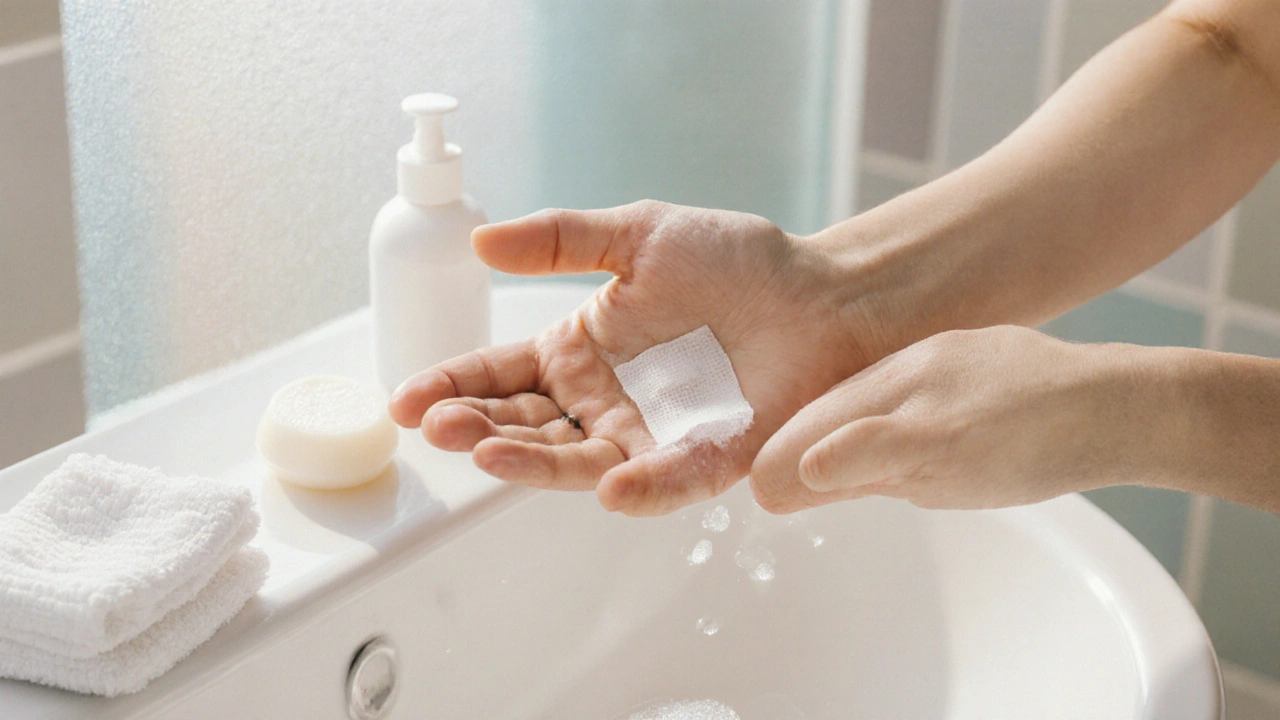Scar Prevention: How to Keep Your Skin Smooth
When working with Scar Prevention, the practice of minimizing visible marks after skin injury, surgery, or acne. Also known as scar reduction, it helps preserve skin confidence and reduces long‑term appearance concerns. Most people think scar prevention starts after a wound closes, but the truth is it begins the moment the skin is damaged. Early steps like gentle cleaning, proper moisture, and avoiding picking set the stage for smoother healing. In this guide we’ll connect the dots between scar prevention and the key players that make a difference: Wound Healing, the body’s natural process of repairing tissue damage, Acne Treatment, targeted therapies that stop breakouts and limit post‑inflammatory scarring, Silicone Gel Sheets, medical‑grade silicone products that flatten and soften new scars, and Sun Protection, broad‑spectrum sunscreen that shields healing skin from UV‑induced darkening. Understanding how these elements interact lets you build a scar‑prevention routine that works for everyday cuts, surgical incisions, and acne‑related marks.
Key Strategies for Effective Scar Prevention
The first pillar is supporting optimal Wound Healing. Clean the area with mild soap and water, then apply a thin layer of an antibiotic ointment if infection risk is high. Moisture is crucial—dry scabs crack and pull at new tissue, leading to thicker scars. Products with petrolatum or hyaluronic acid keep the surface hydrated without clogging pores. Nutrition also plays a role; protein, vitamin C, zinc, and omega‑3 fatty acids provide the building blocks collagen needs to remodel correctly. Avoid smoking, which reduces blood flow and delays the healing cascade.
When the source of potential scarring is acne, Acne Treatment becomes the preventative front line. Early use of topical retinoids or benzoyl peroxide reduces inflammation, a major driver of post‑inflammatory hyperpigmentation and scar formation. Chemical exfoliants like salicylic acid keep pores clear, while oral antibiotics or hormonal therapy can control severe breakouts that would otherwise dig deep wounds. The goal is to stop the lesion before it ruptures; once a pimple bursts, scar risk climbs dramatically.
Once a wound or acne lesion has closed, the next step is dedicated scar management. Silicone Gel Sheets are the gold standard for flat, raised, or reddish scars. They create a semi‑occlusive environment that maintains hydration, reduces collagen overproduction, and flattens the scar over weeks. Apply them for 12–24 hours a day for at least two months to see noticeable improvement. Pressure garments work similarly for larger surgical or burn scars, applying gentle, constant force that reshapes tissue.
Exposure to sunlight can darken new scars, turning a pink line into a permanent brown mark. That’s why Sun Protection is non‑negotiable. Use a broad‑spectrum SPF 30 or higher sunscreen on any healing skin, even on cloudy days. Reapply every two hours and after sweating or washing. Physical blockers like zinc oxide are especially gentle on sensitive post‑procedure skin. Pair sunscreen with protective clothing or hats when you’ll be outdoors for extended periods.
Finally, lifestyle habits reinforce every other step. Stay hydrated, get adequate sleep, and manage stress—these factors influence hormone levels that control inflammation and collagen remodeling. Regular light exercise boosts circulation, delivering oxygen and nutrients to the healing zone. If you notice a scar becoming unusually thick, itchy, or painful, consult a dermatologist; early intervention with steroid injections or laser therapy can redirect the healing process before the scar hardens.
With these tactics—clean wound care, targeted acne control, silicone therapy, diligent sun shielding, and healthy living—you’ve got a full‑stack approach to scar prevention. Below you’ll find a curated selection of articles that dive deeper into each technique, compare products, and share real‑world tips you can start using today.
Learn the step‑by‑step aftercare for wart removal, including cleaning, moisturizing, sunscreen use, scar prevention, and when to seek a dermatologist.


 Medications
Medications